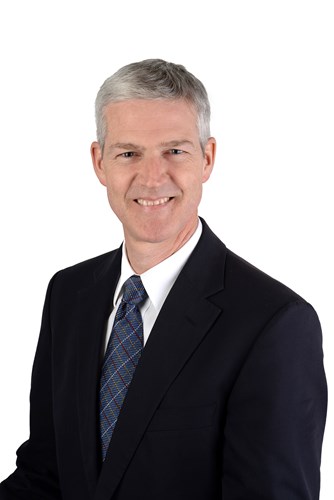10 March 2022 – Eastman has become a reputable name in animal nutrition thanks to a robust portfolio of organic acids. The 100-year-old specialty materials company is now further sharpening its focus on the sector and has identified it as a key growth area for the organisation.
This ambition was signalled with last year’s acquisition of Spain’s 3F Feed & Food, makers of specialised organic acid solutions. Said Sandeep Bangaru, General Manager of the Animal Nutrition at the time, “With 3F, Eastman will extend our specialty product portfolio in animal nutrition gut health for swine and poultry, and increase our application development capabilities, both of which will enable us to accelerate growth of key markets and customers."
In this Industry Perspectives, Feedinfo chats to the company’s Commercial Lead for the EMEA region, Christoph Sikora and Global Technical Lead, Inge Peeters to uncover what other plans the company has in store for its animal nutrition unit and what growth opportunities it is looking to exploit to further solidify its presence as a major player in the sector.
|
You can now watch the highlights of this chat below. Or scroll down to read the full interview. |
|
|
[Feedinfo] Let’s kick off with why Eastman has chosen animal nutrition as a sector for the company to invest in. What was the thinking behind this increase in focus?
|
|
[Christoph Sikora] There are major trends in animal nutrition that will require impactful technology advancements to resolve some of the existing and upcoming challenges, like the continued removal of antibiotics and other materials of concern (e.g., ZnO) from the diets and the necessity to best care for animal health. Eastman believes that it can play a role here with its capabilities and complete portfolio of organic acids, organic acids blends and advanced solutions. We are vertically integrated with a global reach which puts us in a great position to ensure reliability of supply in a very challenging environment. Plus, by connecting chemistry with biochemistry, we are confident that we can further the industry’s mode-of-action understanding of additives and develop new products and technologies that will help mitigate health issues in monogastric species. |
[Feedinfo] You have an extensive organic acids portfolio, which was further bolstered by the 3F Feed & Food acquisition. Is it fair to say that this product category is where are you placing your efforts to unlock further growth in your animal nutrition unit? Where have you identified growth opportunities?
[Christoph Sikora] Our portfolio covers basic products for preservation and hygiene and acidification through to more advanced solutions for gut health. We are putting our efforts to support healthy animals’ growth and mitigate environmental or health challenges, such as post-weaning diarrhoea, Streptococcus suis infections, and poultry dysbacteriosis, just to name a few. This is where the new portfolio from 3F Feed & Food can play a significant role and we are working with customers in concrete trials to demonstrate the improvements our additive solutions can offer.
Whilst individual additives can often only answer singular health issues, like inflammation, microbiota balancing or gut integrity, our goal is to develop and offer holistic solution concepts that incorporate optimal nutritional management as well as good health and welfare practices.
[Feedinfo] Is bigger necessarily better? What does offering a larger product portfolio strategically mean for Eastman? And what about customers? How does this translate into a win for them?
|
[Inge Peeters] Bigger doesn’t always mean better, but in our case, we believe it does! This larger portfolio presents more opportunities for us to help our customers address their specific challenges and achieve their goals. We have one of the broadest portfolios of organic acids and their derivatives, as well as the know-how to combine these products to maximise efficiency. As Christoph mentioned earlier, we always try to develop a comprehensive concept to address the customer’s challenge, for instance by combining products with different mode of actions. |
|
And the breadth of our portfolio is not just limited to our different products. We can also deliver our solutions in different formats, which can be tailored to meet individual customer needs with solid and liquid applications in feed as well as applications via water. This coupled with the different technologies at our disposal, such as acids on carrier, buffered solutions, encapsulation, and esterification, make us very flexible in our approach and allows us the best cost/benefit solution.
Plus, our applications and know-how are not limited to challenges in the field of gut health. We also offer solutions in feed and raw material preservation and hygiene, which means we can help customers solve their challenges at all stages of their production processes.
[Feedinfo] It has been 10 months since the 3F acquisition. How has this changed your approached to gut health? Has this relationship already resulted in new technologies/solutions that you can tell us about?
[Inge Peeters] Our core competence in Eastman Animal Nutrition lies in organic acids and their derivatives for various applications. Being active in this field for many years we truly believe that these constitute a paramount tool to establish gut health.
With the acquisition of 3F, we have added a new brand to our portfolio – Eastman Protural Bond – which combines our experience developed over the years and the acquired knowledge and practical know-how of 3F Feed & Food. With this solution our focus is more on intestinal health and the ways to promote the best balance in the “post-gastric” environment. The new Protural Bond range comprises innovative esterified gut health solutions based on Short Chain Fatty Acids (SCFAs) and Medium Chain Fatty Acids (MCFAs) and their combinations with other active components that we have in our portfolio. Within this range we can develop and deliver customer specific holistic concepts to address a wide variety of industry challenges.
For us good acidification should be the starting point for any robust gut health strategy. Our Eastman Acitra brand includes several acid combinations for efficient acidification via feed, while our Eastman Protaq and Protaq Bond ranges focus on water solutions developed for gut management. In addition, we also have coated and uncoated butyrate (GBM solutions) to complement our offering.
[Feedinfo] How are you employing your new portfolio to help with industry challenges, like ZnO limitations in weaning piglet diets? What is your approach?
[Inge Peeters] In a constantly evolving regulatory and social environment, it is important to recognise and deploy synergies between molecules and mode of actions which can deliver the desired result.
It is important to understand the causes and effects of a challenge to be able to target specific interventions. We have a very good understanding of the mode of action of the different components of our portfolio and can therefore provide sound advice on how best to deploy different solutions for the best possible results. For example, in an ZnO free feeding programme it is important to consider the holistic picture. This includes raw material selection and quality, environmental factors and rearing conditions, as well as supporting intestinal health with a feed additive concept (such as our Protural Bond 100) which exploits the beneficial effects of short and medium chain fatty acid glycerides.
[Feedinfo] Is it fair to say that when it comes to organic acids customers understand their effectiveness as preservation, hygiene, and gut health tools, but might need some guidance in their correct application? Why do you think that is? And how is Eastman helping here?
[Inge Peeters] Organic acids have of course been used in the feed industry for a long time, but we see that fundamental knowledge is often overlooked. In addition, there are always new challenges we face, and new technologies also become available that can change the way products can be applied and that can impact their mode of action.
In recent years, we have invested in comprehensive research demonstrating synergies when combining SCFA and MCFAs. Furthermore, the esterification technology applied to these molecules opens new possibilities in terms of safer handling, additional and sustained pathogen management, and improved health and performance via feed (Protural Bond) but also via water (Protaq Bond).
Also, we have a team of global experts that understand the unmet needs of the customer in their areas of the world very well and can explain in more detail how our programmes should be applied. There are many variables, so it is important to discuss the specifics to offer the right solution, in the right form, and dosage. With the added assets and experience of 3F Feed & Food, our flexibility has increased, making us even better able to offer customised solutions to meet specific requirements.
Regarding the dosing of the products, our local laboratories can verify the accuracy of the product application and we can even provide engineering/equipment support in case of new applications, like changes from solid to liquid products. Also, we support our customers with services such as organic acid recovery to evaluate the application process effectiveness minimising risks and costs.
[Feedinfo] What are some of the other investments Eastman has made to ensure it can deliver further growth in the animal nutrition sector and stand out amongst its competitors?
[Christoph Sikora] Well, the acquisition of 3F Feed & Food is one of the most recent significant investments! It is complementing our existing broad organic acid-based portfolio in an impactful way and helps us broaden our expertise and offering of solutions for health optimisation in swine and poultry.
Furthermore, we have and are continuing to grow our team of global experts and have established a broad research programme that will allow us to better understand the most impactful solutions to health challenges. Finally, we expanded our lab facilities and grew our capabilities in Gent and Kingsport in 2020 and 2021, as bases for our R&D efforts. We will continue investing more in these capabilities in the coming years.
Published in association with Eastman

 Christoph Sikora
Christoph Sikora Inge Peeters
Inge Peeters

